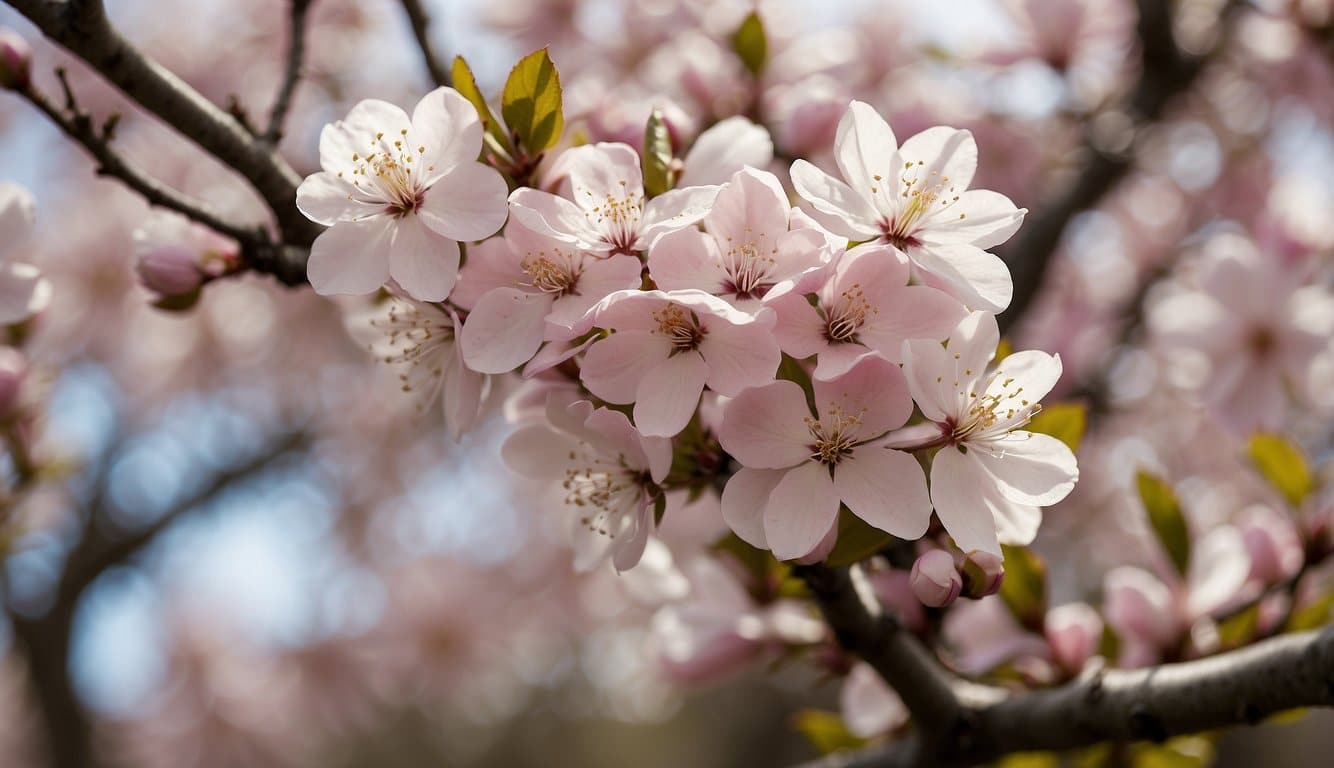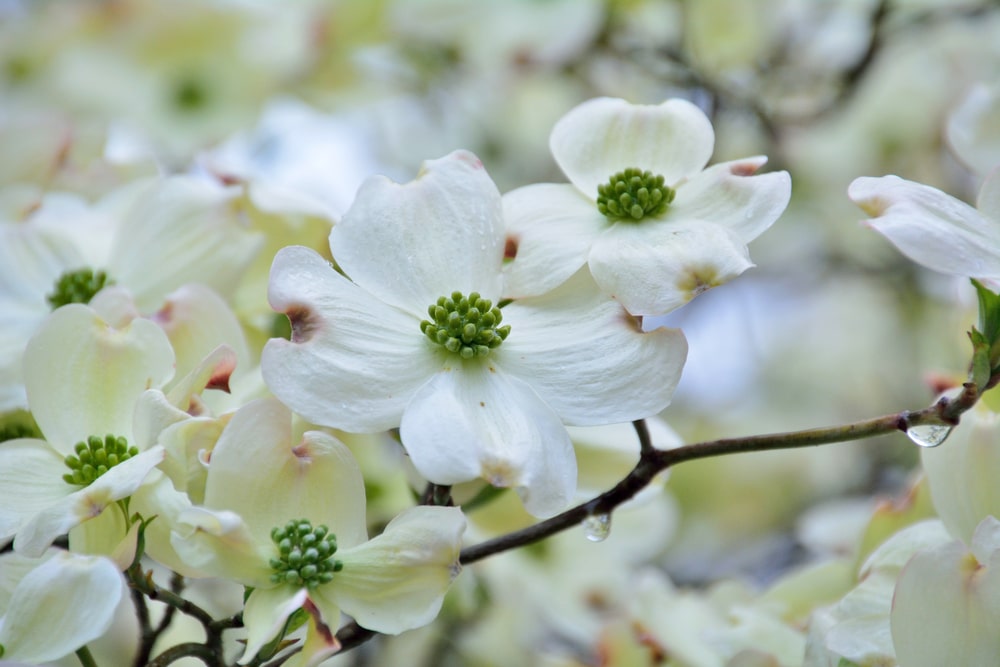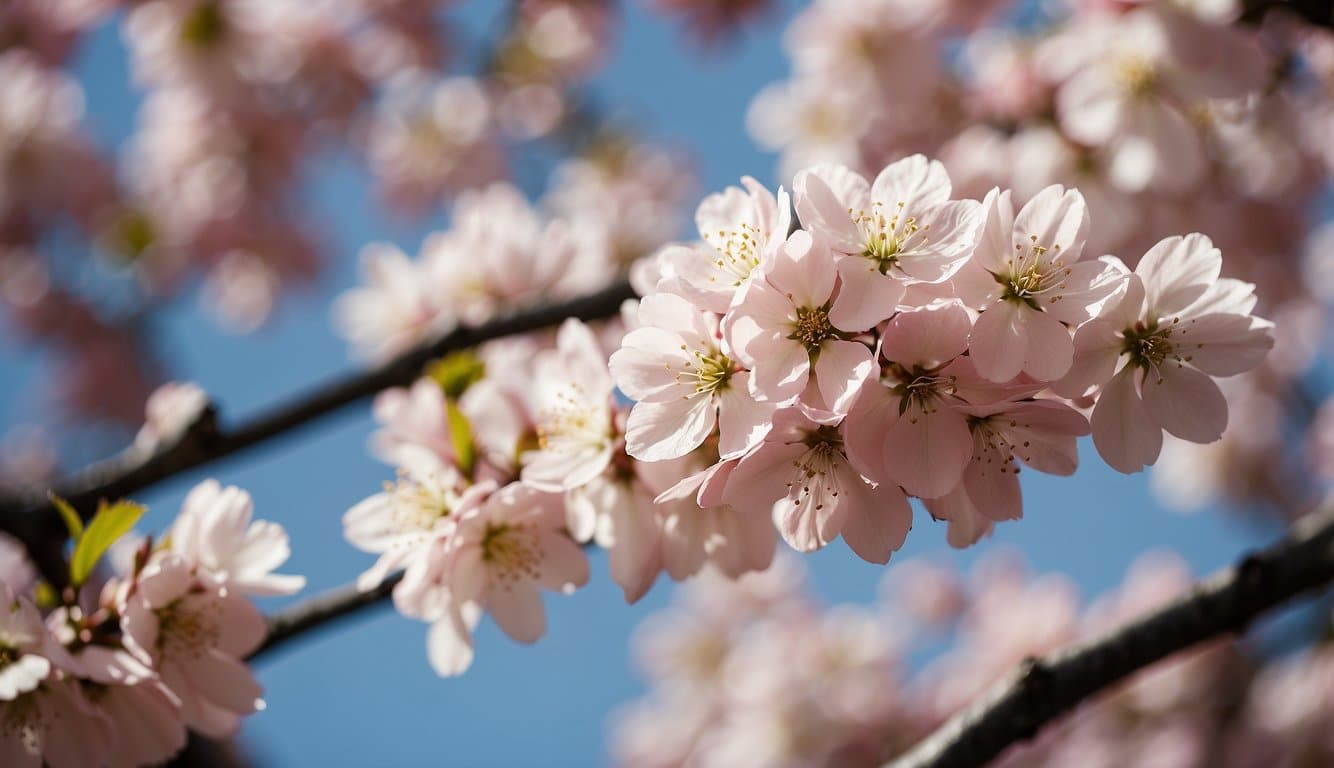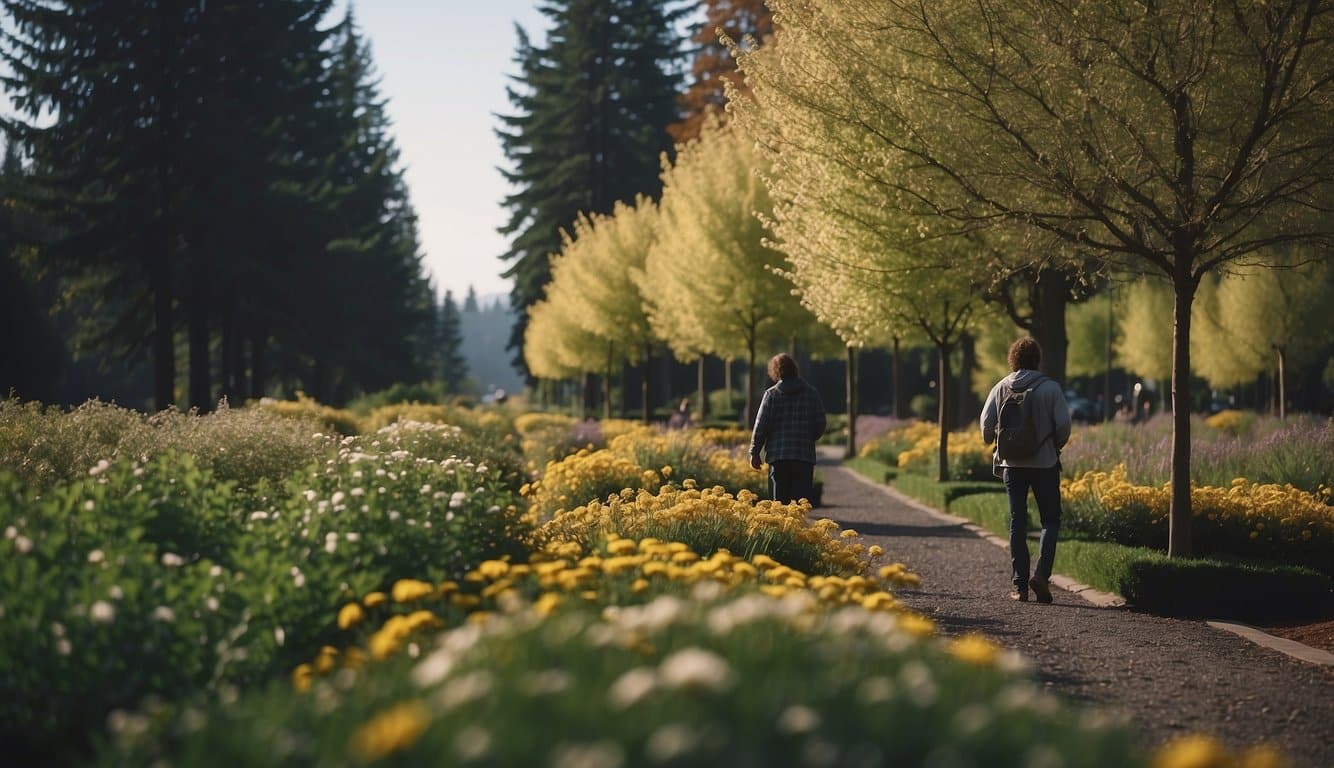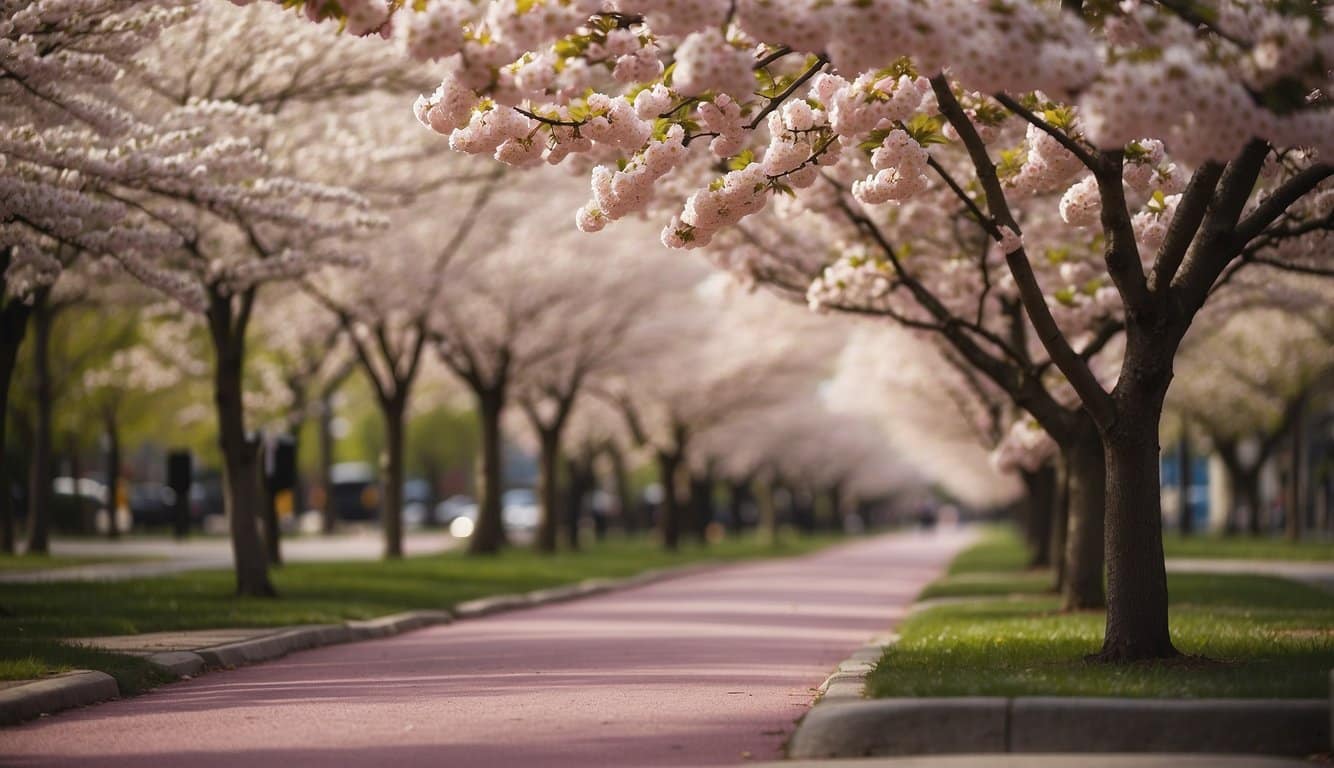Washington State is adorned with a variety of flowering trees that elevate the aesthetics of its landscapes. These trees not only add a burst of color and fragrance to gardens and public spaces but also play a pivotal role in the local ecosystem.
From the delicate blossoms of the White Dogwood with its dark green foliage to the subtle charms of other native species, these trees offer a diverse palette for gardeners and enthusiasts looking to enhance their outdoor spaces.
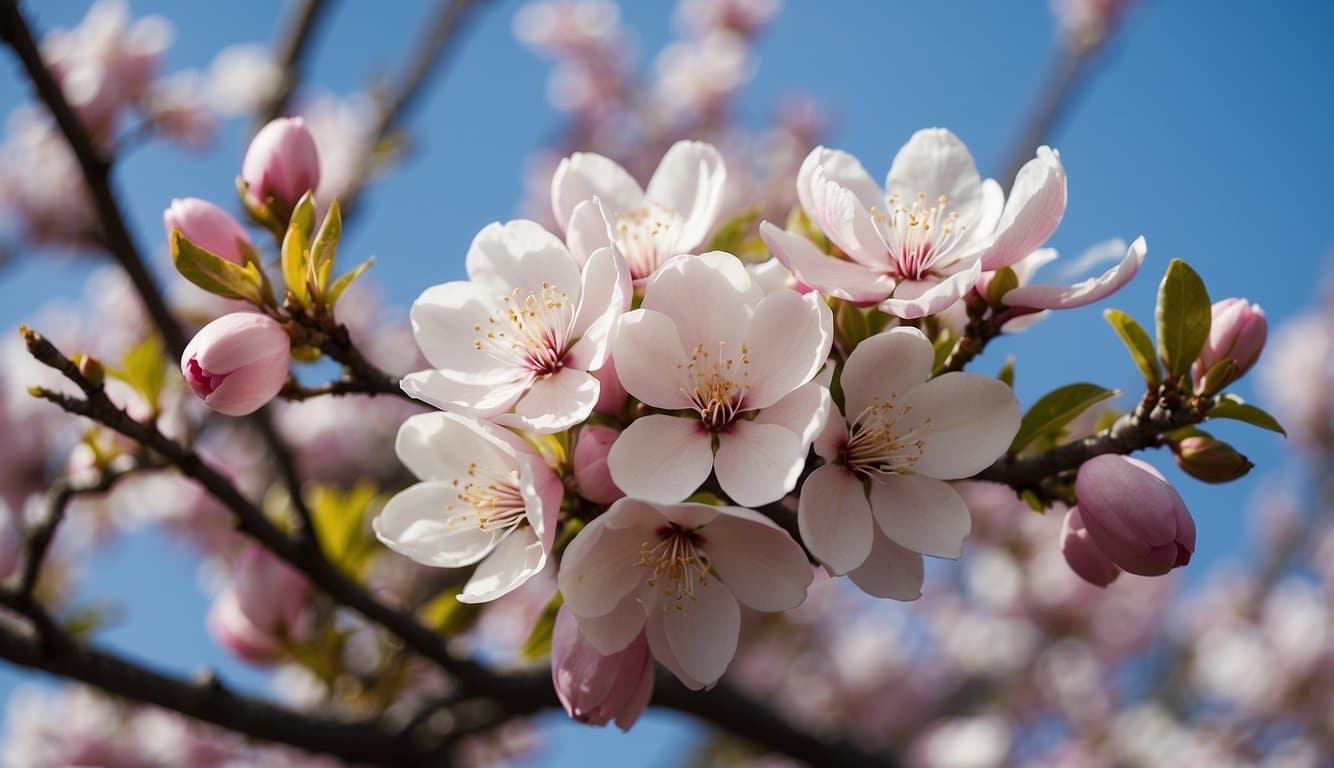
As gardeners in Washington select trees for their yards, they must consider the blooming seasons and the specific care requirements for each species.
The state’s climatic range, from coastal to mountainous regions, means that a tree well-suited for one area may not thrive in another.
Knowledge of when each tree blooms and how to tend to its needs is essential for ensuring the health and longevity of these botanical beauties.
Key Takeaways
- Flowering trees provide aesthetic and ecological benefits in Washington State.
- Proper selection is based on blooming cycles and regional climate compatibility.
- Understanding care requirements ensures successful tree growth and bloom.
Types of Flowering Trees in Washington
Washington State is home to a splendid variety of flowering trees that add color and life to the landscape. They range from native species with ecological benefits to popular ornamentals that enhance the aesthetic appeal of gardens and parks.
Native Species
Cornus florida (White Dogwood, pictured directly above): This native tree is prized for its dark green foliage and dense clusters of white flowers. Its leaves turn scarlet in the fall, ensuring year-round interest.
- Bloom Season: Spring
- Color: White
- Foliage Fall Color: Scarlet
Popular Ornamentals
Prunus serrulata (Japanese Cherry): While not native, this ornamental tree is widely celebrated for its stunning pink blossoms and is a staple in many Washington landscapes for its spectacular spring display.
- Bloom Season: Early Spring
- Color: Pink to White
- Note: Prefers well-draining soil
Both native and ornamental flowering trees contribute significantly to Washington’s horticultural diversity, with natives supporting local wildlife and ornamentals providing unrivaled beauty for residents and visitors to enjoy.
Blooming Seasons in Washington
Washington’s diverse climate accommodates a range of flowering trees, with distinct blooming periods that transform the region throughout the spring and into summer.
Early Spring Bloomers
Cherry Blossoms: The iconic cherry blossoms in Washington, DC, typically reach their peak around April 4, but this can vary annually. Visitors eagerly anticipate the National Park Service’s prediction for peak bloom dates each year.
White Fringe Tree: Known for its fragrant, delicately textured petals, the White Fringe Tree is a standout with blossoms emerging in early spring and thriving in various conditions found across Washington state.
Late Spring to Summer Bloomers
Flowering Cherry Trees: Across the Pacific Northwest, various species of cherry trees begin showing (red/pink) buds by mid-March, continuing to bloom into a spectacular display of (pink/white) flowers through mid-April. Some varieties extend their blossoms into late spring.
Weather-dependent Blooms: The Puget Sound region sees a mix of spring flowers, with some trees showing signs of life after the cold and rain of Seattle subside, indicating that summer is near. The specific timing of these blooms can shift due to weather changes.
Planting and Care Guidelines
When planting flowering trees in Washington, a careful approach to site selection and preparation, alongside measured tree maintenance practices, ensures a vibrant and healthy addition to one’s landscape.
Site Selection and Preparation
Site selection constitutes the first, critical step to successful tree planting.
For optimal growth, flowering trees require an area that receives ample sunlight.
Washington Hawthorn, for example, thrives in full sun.
The chosen site should provide enough space for the tree to reach its full size without conflict with buildings or other plants.
Additionally, the soil at the planting location must be well-draining and fertile.
One may need to modify the existing soil with organic matter to improve its structure and nutrient content.
Before planting, it’s recommended to dig a hole twice the width of the root ball and as deep as its height.
Root-bound trees should have their roots loosened, and excess potting soil should be removed without shaking it into the planting hole.
Tree Maintenance Practices
After planting, appropriate maintenance is essential for flourishing trees.
Regular watering is crucial for young trees, establishing stability and promoting growth.
As trees mature, they often become more drought-resistant. However, one should monitor moisture levels during prolonged dry spells.
For trees like the White Dogwood, seasonal maintenance is valuable.
In fall, post-flowering, consistent mulching helps retain soil moisture and regulate temperature.
Pruning is another vital practice; removing dead or broken branches aids in maintaining structural integrity and aesthetic appeal.
Pruning should occur during dormancy, often in late winter before the spring growth flush for trees that flower in spring or summer.
The following table provides specific spacing guidelines, as these vary between trees used as privacy hedges or specimen plants:
| Tree Type | Specimen Tree Spacing | Hedge Spacing |
|---|---|---|
| Washington Hawthorn | At least 25 feet | 3-5 feet |
| White Dogwood | 10-15 feet | Not Applicable |
Frequently Asked Questions
When choosing flowering trees for landscapes in Washington, gardeners often have questions about suitability, aesthetics, and care. This section addresses common inquiries with specific attention to the climatic nuances of the Pacific Northwest.
What are the best flowering trees for the Pacific Northwest region?
For vibrant springtime blooms, the White Dogwood (Cornus florida) is an excellent choice. It thrives in Washington, offering luscious foliage and dense clusters of white flowers.
Which small flowering trees thrive in Washington State?
Small flowering trees like the Eastern Dogwood do well in Washington’s climate. They provide bright and showy fall leaves while maintaining a smaller stature suitable for various garden sizes.
Can you list some evergreen flowering trees that are suitable for Washington’s climate?
The Pacific Rhododendron is an evergreen that thrives in Washington, bearing beautiful flowers. It is well-adapted to the region’s climate and is a state symbol for that reason.
What types of flowering trees are commonly found in Seattle landscapes?
In Seattle, Cherry Blossoms are a significant attraction and a common flowering tree. They are widely appreciated for their aesthetic appeal and their abundant, delicate blossoms.
What purple flowering trees can be seen around Washington state?
The Western Redbud (Cercis occidentalis) offers striking purple flowers in early spring. Although not native, it adapts well to Washington’s environment, providing a splash of color to the local greenery.
What trees to consider for white blooms in the Pacific Northwest?
In addition to the White Dogwood, gardeners in the Pacific Northwest might consider the Pacific Dogwood (Cornus nuttallii).
This tree is native to the area and shows off white blossoms that are similar to its Eastern counterpart.
